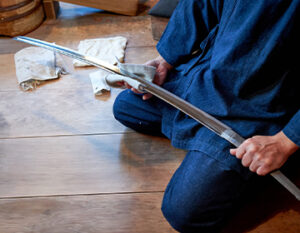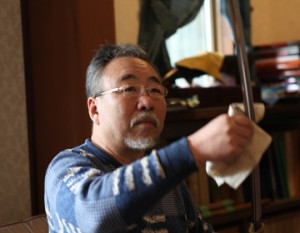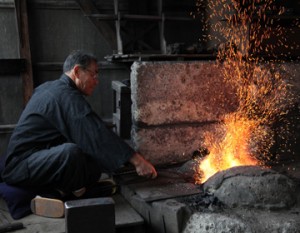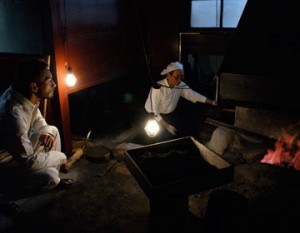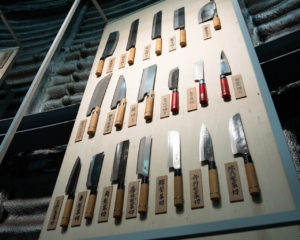In “Manyoshu,” Japan’s oldest known anthology of waka poems composed about 1,200 years ago, Otomo no Yakamochi laughed at the summer weight loss of the same official and recommended that he eat eels. One theory suggests that eels were already being eaten as early as the Jomon period (710-794), and eels have been known as a tonic fish in Japan since ancient times. In the Edo period (1603-1867), it is said that “kabayaki,” a style of cooking in which the eel meat is opened, gutted and boned, skewered, and grilled in a savory sauce made of soy sauce and mirin (sweet sake), became widespread. Like tempura, nigiri-zushi, and soba (buckwheat noodles), which were perfected around the same time, today’s kabayaki continues to be loved almost as much as it was then.
Seki City in Gifu Prefecture, where many sword smiths moved to during the Kamakura period (1185-1333) and the cutlery industry developed. In Seki City, Gifu Prefecture, where many sword smiths moved to during the Kamakura period (1185-1333) and the blade industry developed, eels were valued as a source of stamina for sword smiths who worked in hot workshops all day long, merchants often used eels for business meetings, the clear Nagara River running through the city was a good growing environment for eels, which are born at sea and raised on the river, and cormorant fishermen also loved eels as a dish to invigorate their spirits. The combination of these factors and many others led to the development of many eel restaurants along with the local industry, and even today, more than 20 eel restaurants are concentrated in a small area, which is popular not only among local residents but also among tourists.
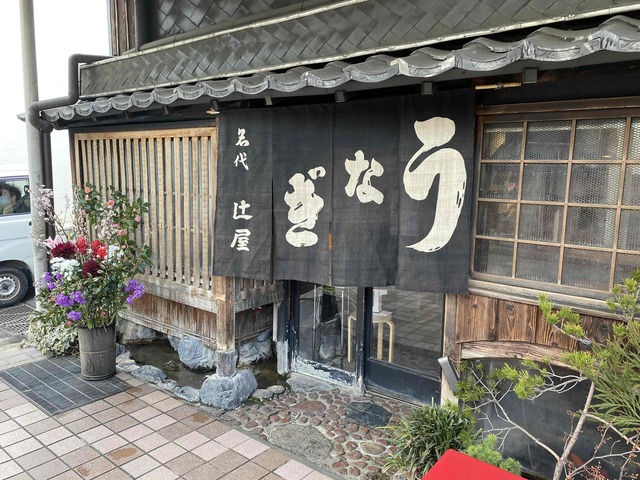
The oldest of these restaurants is Tsujiya, located in a corner of the Honmachi shopping street, which stretches approximately 800 meters east to west in the center of Seki City and retains its old-fashioned townscape. Tsujiya was founded in the Edo period (1603-1867). The founder’s love of river fishing led him to open a restaurant to introduce people to the deliciousness of river fish.
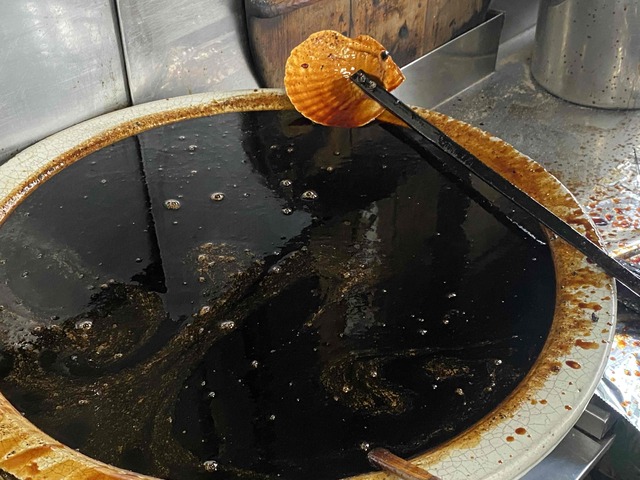
Around the restaurant, the smoke from the broiling eels and the aroma of burnt sauce wafting in the air whet the appetite. After passing through the brick door, customers of all ages sit at the sunken kotatsu in the long tatami room in the back of the restaurant and wait for their food. The famous proprietress, dressed in a beautiful Japanese kimono, welcomes the customers who come in endlessly, and in the back of the restaurant, artisans skewer and grill eels with expert skill. This scene, unchanged since the establishment of the restaurant, is the reason why it is a long-established business.
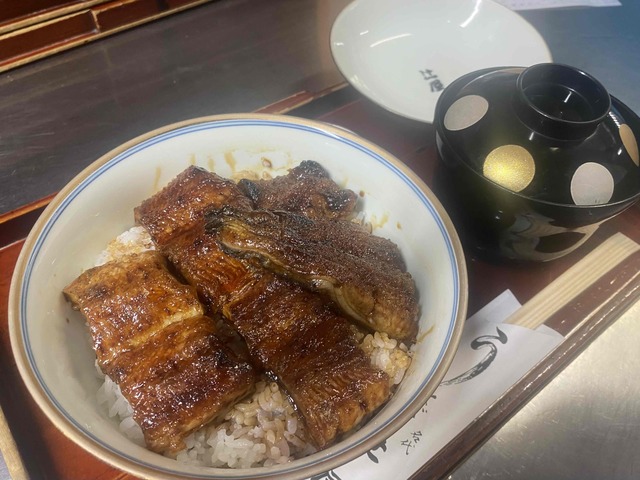
The specialty is “unadon (bowl of eel rice topped with rice topped with a bowl of eel). The grilled surface is fragrant and crispy. The inside of the bowl is filled with a good amount of fat. Combined with the secret sauce, it is a perfect match for the hard-cooked rice. The basic style is not the Kanto style, in which the eel is opened from the back, skewered, steamed, and grilled, but the Kansai style, in which the eel is opened from the belly, skewered, and grilled as it is. However, in order to ensure that the cross section is crispy, the eel is cut into pieces before skewering. The eel is dipped into the secret sauce, which has been used for generations, and then placed on a grill with binchotan charcoal and returned to the skewer at just the right moment. The fat from the eel falls onto the charcoal and is smoked, and the smoke that rises from the charcoal leaves a rich aroma on the surface of the eel. The flavor is so good that the eel is often served with white rice, leaving only the rice.
The taste is so well known that it is listed as a “Michelin plate” in the “Michelin Guide Aichi, Gifu, and Mie 2019 Special Edition”. It is a must-try dish for those who want to visit Seki. The restaurant’s philosophy is “3 years of skewering, 8 years of tearing, and a lifetime of grilling. The taste loved by many masters is here.




